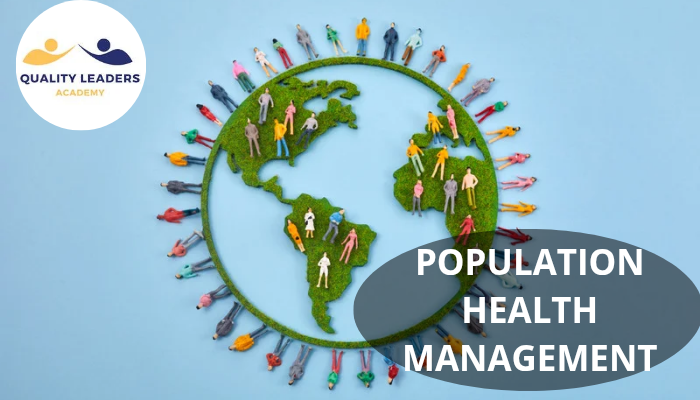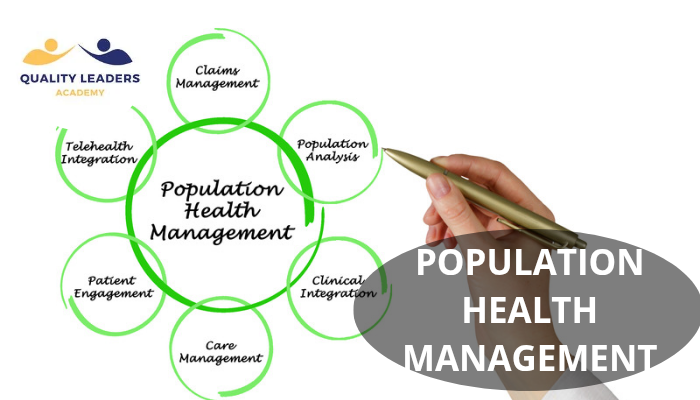Population health management (PHM) is a strategic approach that aims to improve the health outcomes of a defined group by addressing the broad range of factors that influence health. By integrating data analytics, care coordination, and patient engagement, PHM seeks to shift the focus from reactive to proactive healthcare.
A BRIEF HISTORY OF POPULATION HEALTH MANAGEMENT

The concept of population-based care isn't new, but the term “population health management” began gaining traction in the early 2000s. It emerged as a response to the rising costs of healthcare, the growing burden of chronic diseases, and the realization that traditional, reactive medical models weren’t enough.
Instead of focusing on individual patient care alone, health systems started to look at entire populations, asking big-picture questions like:
- Why are certain communities more at risk for diabetes?
- How can we reduce hospital readmissions?
- What can we do before someone gets sick?
By using data, technology, and coordinated care, PHM became a strategic framework for improving health outcomes on a larger scale.
In countries like the United States and the UK, PHM grew rapidly as governments and insurers pushed for value-based care. Today, it’s making headway in other parts of the world, too, including population health management in Saudi Arabia, where it supports Vision 2030 goals for healthcare transformation.
WHAT IS population health management?
Simply put, population health management is a model that focuses on improving the health outcomes of a defined group of people while managing costs and enhancing patient experience. Instead of waiting for disease to strike, PHM helps healthcare providers predict and prevent problems by looking at the bigger picture.
It’s about using data to understand health trends, identifying people at risk, and then coordinating care in a way that’s efficient, personalized, and proactive.
THE CORE COMPONENTS OF POPULATION HEALTH MANAGEMENT
To truly understand how PHM works, it helps to break it down into its main components. Think of these as the building blocks that make PHM successful:
1. Data Collection and Analytics
At the heart of PHM lies data. Health systems gather information from electronic health records (EHRs), insurance claims, lab results, and even social determinants of health (like housing or income). This data is then analyzed to:
- Spot health trends.
- Identify high-risk patients.
- Predict future health needs.
This kind of insight allows for smarter decision-making and resource allocation.
2. Risk Stratification
Once data is analyzed, PHM systems sort the population into different “risk” categories (high, medium, and low). This process, called risk stratification, ensures that patients who need the most attention get it early on.
For example, a patient with uncontrolled diabetes and frequent ER visits would be flagged as high-risk and receive more intensive, personalized care.
3. Care Coordination
PHM isn’t just about knowing who needs help, it’s about making sure they get it. That’s where care coordination comes in. Nurses, doctors, case managers, and social workers all work together to provide seamless care across different settings.
This reduces duplication, ensures follow-up, and helps patients stay on track with treatment.
4. Patient Engagement
People are more likely to stay healthy when they’re involved in their own care. PHM encourages patient engagement through education, digital tools (like patient portals or mobile apps), and ongoing communication.
Empowered patients are more likely to follow treatment plans, attend appointments, and make healthy lifestyle choices.
5. Technology Platforms (PHM Systems)
A population health management system integrates all these components into a digital framework. These platforms store data, support analytics, and provide dashboards for tracking progress. Many also offer real-time alerts and decision support tools for clinicians.
POPULATION HEALTH MANAGEMENT IN SAUDI ARABIA
Saudi Arabia is embracing PHM as part of its broader effort to modernize healthcare under Vision 2030. With rising rates of chronic diseases and a growing population, the country is investing in:
- Digital health records and unified systems.
- Preventive care programs.
- Training for healthcare professionals in PHM principles.
Hospitals and healthcare authorities are starting to implement PHM systems that track population health metrics, integrate services, and guide policy decisions based on real-world data.
As PHM becomes more mainstream, it’s also generating new job opportunities in Saudi Arabia and across the Gulf region, especially in health informatics, public health strategy, and care coordination.
CAREER PATHS AND SALARIES IN PHM
If you’re considering a career in this space, there are many options. Common population health management jobs include:
- Population Health Analyst.
- Clinical Care Coordinator.
- Health Informatics Specialist.
- Community Health Worker.
- Public Health Manager.
According to current data, the population health management salary for professionals ranges from $70,000 to $110,000 annually in the U.S., depending on role and experience. In regions like Saudi Arabia, salaries are competitive and continue to grow with increased investment in public health infrastructure.
REAL-WORLD APPLICATIONS OF PHM

PHM isn’t just theory, it’s already improving lives. Here are a few population health management examples in action:
Managing High-Risk Patients:
Health systems are using predictive models to identify people at risk for heart failure and assigning them case managers to reduce hospital visits.
Maternal Health Programs:
Coordinated prenatal care and education are reducing complications in underserved communities.
Behavioral Health Integration:
Clinics are combining mental and physical healthcare to improve outcomes and reduce stigma.
These success stories highlight the practical value of PHM in delivering measurable health improvements.
THE FUTURE OF POPULATION HEALTH MANAGEMENT
Looking ahead, PHM is expected to grow rapidly as health systems worldwide shift to value-based models. Key trends to watch include:
- AI-powered analytics for better predictions.
- Remote monitoring and telehealth integration.
- Focus on social determinants to address the root causes of illness.
Governments, hospitals, and private organizations are all investing in PHM, and as technology advances, we can expect an even greater impact.
CPHQ COURSE AND POPULATION HEALTH MANAGEMENT
Quality Leaders Academy offers a comprehensive CPHQ course that thoroughly covers the principles of Population Health Management. Participants will explore essential topics like risk stratification, health data analytics, proactive care coordination, and strategies to improve community health outcomes. This training is ideal for professionals aiming to lead the transition toward value-based care and population-focused strategies.
Finally, we could say that Population health management is more than a healthcare strategy; it’s a movement toward smarter, more humane, and sustainable care. By combining data, collaboration, and patient engagement, PHM helps healthcare providers deliver the right care to the right people at the right time.
Whether you're exploring the PHM impact factor, researching tools in a population health management PDF, or implementing a national strategy in Saudi Arabia, the future of healthcare lies in managing populations, not just treating individuals.
Read also:
INFECTION CONTROL CERTIFICATION ONLINE
Resources:
https://www.amcp.org/concepts-managed-care-pharmacy/population-health-management
https://www.england.nhs.uk/integratedcare/phm/
https://www.snhu.edu/about-us/newsroom/health/what-is-population-health-management


